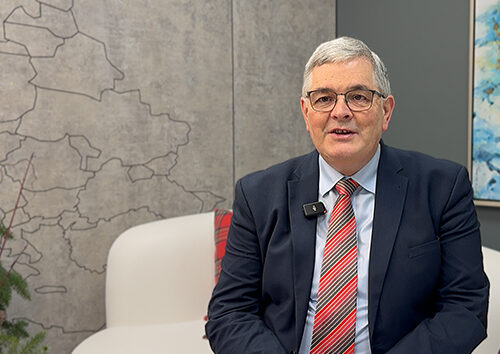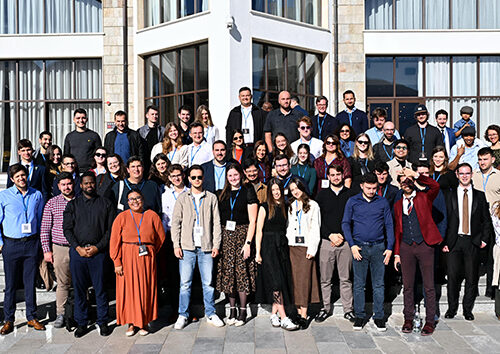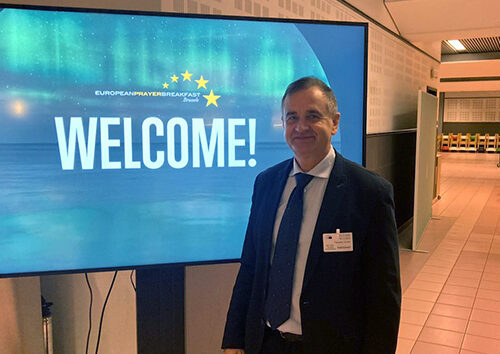28 June 2012 Bracknell, UK [Philip R Brown] In The Twelve Absolutes of Leadership Gary Burnison recounts the story of a farmer whose donkey fell into a well. The farmer frantically thought about what he could do as the stricken animal cried out to be rescued. With no obvious solution, the farmer regretfully concluded that because the donkey was old and the well needed to be filled in anyway, he should give up the idea of rescuing the beast. Instead, he should simply fill in the well and hope the poor animal would not suffer too much.
The farmer asked his neighbours for help and they all began to shovel earth into the well. When the donkey realised what was happening, he brayed and struggled. Then, the noise stopped.
The farmer looked down into the well and was astonished at what he saw. The donkey was still alive and was progressing towards the top of the well. By shaking off the dirt instead of letting it cover him, he could step on the accumulating soil as the level rose. When the donkey reached the top, he stepped over the edge and gave the farmer one last look. “Now who’s the jackass?” the donkey remarked, and trotted happily away.
This story offers a key insight for those seeking to be effective Church leaders, who must have and demonstrate learning agility. The latter can be defined as the ability to learn from experience and to apply that learning to new situations. Learning agility is not the same thing as having a high IQ or EQ (emotional intelligence). Rather, a Church leader with learning agility can excel at absorbing information from his or her experiences and applying it to the present – thereby creating an agile Church organisation that also learns, grows and adapts.
Yes, learning as a Church leader is often about adapting, being open-minded, and being willing to find solutions that are not always obvious. As a Church leader you cannot expect to learn from things you are NOT doing! Consequently, there can be times when you should expect to fail. Such situations demand that you choose not to blame yourself but rather to learn. In fact, it has been said that the only real failure is failing to fail. A Church leader who fails to fail from time to time could either be unaware of what is going on or simply be acting too cautiously.
So how do you improve and grow yourself in order to improve and grow your Church organisation? One key requirement is your own preparedness to maintain an open and curious mind. In their book Great Leaders Grow Ken Blanchard and Mark Miller suggest that for a leader growing is like oxygen to a deep-sea diver – without it you die. Unlike the diver, you may not physically die – but if you stop growing, your influence may well erode, and over time, you may even lose the opportunity to lead at all.1
The failure to grow has sabotaged the career of more Church leaders than just about anything else. Hence, your capacity to grow is crucial in determining your capacity to lead. If you wish to improve or grow your Church organisation, then you too must continue to improve and grow. Blanchard and Miller have utilised the acronym GROW to remind leaders of the key ingredients for fostering their personal and professional growth:
- G = Gaining Knowledge – this ingredient includes knowing one’s own strengths and weaknesses; knowing the people one leads on a deep level (personally and professionally); knowing one’s industry extremely well; having a high level of mastery of the principles and practices of leadership; and having a detailed, written personal development plan.
- R = Reaching Out to Others – this ingredient includes always looking for ways to invest in the growth of others; having ongoing mentoring relationships with emerging leaders; frequently seeing and seizing teachable moments; frequently sharing with others what one has learned; and developing a high level of mastery in communicating one’s point of view on leadership.
- O = Opening Your World – this ingredient includes constantly looking for opportunities to grow at work; seeking new experiences outside the workplace; having a mentor(s) who helps you grow; always looking for additional opportunities to lead; and seeing every day as an opportunity to learn and grow.
- W = Walking toward Wisdom – this ingredient includes consistently telling oneself the truth regarding one’s leadership; actively seeking feedback from those you know to be truth tellers; having a group of people you trust to give you counsel on important issues; having mastered the art and discipline of asking profound questions; and being fully committed to a lifelong pursuit of wisdom.2
Blanchard and Miller maintain that a leader’s capacity to GROW determines their capacity to lead! Further, improving yourself as a leader is crucial in seeking to improve and serve your organisation. Interestingly, it appears that in most organisations the best leaders choose to serve others. Servant leaders are normally those whose goals are focused on the greater good. In The Secret: What Great Leaders Know and Do, Blanchard and Miller offer a helpful description of the ways in which a leader can SERVE. They utilise the acronym SERVE to highlight key leader behaviours:
- S = Seeing the Future – Servant leaders envision and communicate a compelling picture of the future. Leading always begins with a picture of a preferred future.
- E = Engaging and Developing Others – Servant leaders recruit and select the right people for the right job while creating an environment where people wholeheartedly invest themselves in achieving the vision.
- R = Reinventing Continuously – Servant leaders possess a never-ending focus on improvement. Progress is impossible without change.
- V = Valuing Results and Relationships – Servant leaders generate positive, measurable results, and cultivate great relationships with those they lead. Ultimate success always includes people and performance.
- E = Embodying the Values – Servant leaders live in a fashion consistent with their stated values. People learn more from what a leader does than from what a leader says.3
Your willingness to keep learning as a Church leader can make a powerful statement to your entire Church organisation. A Church leader learns more lessons when mistakes are made than when successes come easily. Consequently, as a Church leader you should have a heightened realisation that you are not invincible or irreplaceable. The reality is that one day you will leave your current Church organisation. When you do, will your Church organisation be in a substantially better place than it was before you inherited it?
To improve, grow and serve your Church organisation you need to continue improving and growing yourself. An improving, growing and serving Church leader chooses to empower and inspire people to align with a greater purpose in order to improve and grow their Church organisation. Remember the story of the donkey – the day you (or your Church organisation) stops learning becomes the day you (or your Church organisation) may start dying!
______________________________
1 Ken Blanchard & Mark Miller, Great Leaders Grow: Becoming a Leader for Life (San Francisco: Berrett-Koehler, 2012), p. 1.
2 Great Leaders Grow, p. 114-115.
3 Great Leaders Grow, p. 119.
By Dr Philip R Brown, Principal, Newbold College
Used with permission from Leadership Development Journal – June-July 2012


